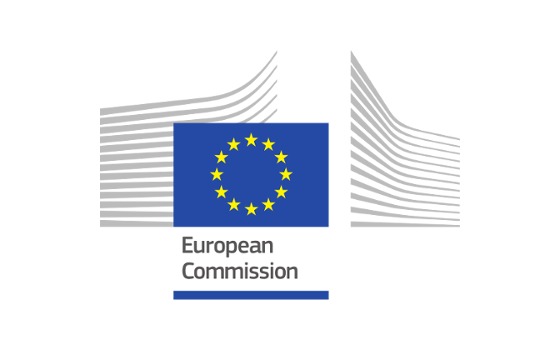 A range of factors is responsible for the (re-)emergence of infectious disease threats, including antimicrobial resistance, altering the epidemiology and spread of disease in a changing global environment. These include drivers such as climate change and associated environmental impacts, population growth, unplanned urbanisation and high mobility, as well as animal husbandry or intensive farming practices.
A range of factors is responsible for the (re-)emergence of infectious disease threats, including antimicrobial resistance, altering the epidemiology and spread of disease in a changing global environment. These include drivers such as climate change and associated environmental impacts, population growth, unplanned urbanisation and high mobility, as well as animal husbandry or intensive farming practices.
At the same time, tools for infectious disease diagnostics and surveillance are evolving rapidly, allowing for ever more accurate diagnosis in ever shorter time. The use of next generation sequencing combined with surveillance data, health registries and societal data from informal/non-traditional sources (e.g. social media) holds promise for improving individual and population health. Current advanced IT technologies offer the opportunity to integrate such big data sets and could enable the rapid and personalised treatment of infected patients, and bolster the detection, tracking and control of infectious disease outbreaks.
It is expected that proposals develop:
- the technology to allow the pooling, access, analysis and sharing of relevant data, including next generation sequencing;
- the innovative bio-informatics and modelling methodologies that enable risk modelling and mapping; and
- the analytical tools for early warning, risk assessment and monitoring of (re-)emerging infectious disease threats.
Proposals should be able to demonstrate the feasibility of such extended data mining for the purposes outlined above, as well as its European level added value. The ready-to-use analytical tools and services that are developed should be based on an assessment of the needs of potential end-users in the Member States and on European level, should as far as possible build on and be compatible with existing European initiatives, and should remain available for public use at the end of the project at a reasonable cost.
Proposals should be transdisciplinary and ensure an integrated One Health approach by linking data from a wide range of relevant sources depending on the infectious disease threat. These may include human (e.g. community, hospital or laboratory health services) and animal health surveillance, health registries, microbial and viral genomic data (including next generation sequencing), pathogen resistance data, mapping of vectors, climate and environmental data[1] as well as societal data that are correlates of disease; possible sex and/or gender differences should be taken into account. Solutions for gaps in existing data (addressing both a lack in quality and quantity) should be proposed.
Solutions for interoperability between different data sources should be addressed and integrated. It is expected that quality-controlled data are shared in accordance to the general concepts of the FAIR principles. The use of harmonised protocols in collaboration with other actors is recommended for this purpose. Appropriate regulatory and governance mechanisms need to be foreseen, taking into account different data sharing needs, as well as data privacy and data security aspects for the different types of stakeholders providing and analysing data. The technology and tools developed should be functional outside of outbreaks (i.e. in "peace time"), so that all stakeholders involved develop a routine use of them. At the same time, flexibility is needed to enable adaptation to different outbreak contexts and situations. The proposal shall foresee, in case of public health emergencies, open access to data at the moment it is generated or no later than one month thereafter subject to any safeguards required to protect research participants and patients, in accordance with the relevant options in Article 29.3 of the Model Grant Agreement.
The use of advanced IT technologies like high performance computing, or geo-localisation data are anticipated. The use of European health research (e-)infrastructures such as those included under CORBEL is encouraged where relevant. The successful proposal(s) should foresee to consult with the end-users at both national (e.g. public health institutes) and European (e.g. ECDC, EFSA) level at key milestones of the project's timeline. If more than one proposal is selected, they are expected to collaborate. In addition, coordination will be needed with the selected proposal from the Horizon 2020 call topic SFS-36-2017 on the establishment of a European Joint Programme on One Health.
The Commission considers that proposals requesting a contribution from the EU of between EUR 12-15 million would allow this specific challenge to be addressed appropriately. Nonetheless, this does not preclude submission and selection of proposals requesting other amounts.
Expected Impact:
- Strengthened EU preparedness to address threats from (re-)emerging infectious disease threats, by making available the appropriate technology and tools for risk modelling and early threat detection, to support an appropriate public health response.
- Contribution to the European One Health action plan against antimicrobial resistance.
- Contribution to the digital transformation of health and care within the context of the EU Digital Single Market.
- Contribution to achieving Sustainable Development Goal (SDG) 3 and specifically the targets on 1) combating epidemics, and 2) strengthening capacity for early warning and response to health risks. Contribution to achieving of SDG 13 and specifically the targets on 1) integrating climate change measures into national policies, strategies and planning, and 2) improving education, awareness-raising and human and institutional capacity on climate change adaptation, impact reduction and early warning.
Opening date: 26 July 2018
Deadline: 16 April 2019 17:00:00
Deadline Model: single-stage
Type of action: Research and Innovation action
For topic conditions, documents and submission service, please visit:
https://ec.europa.eu/info/funding-tenders/opportunities/portal/screen/opportunities/topic-details/sc1-bhc-13-2019
PS: Find your partners or consortia preparing a project proposal
If you need help to identify a potential partner with particular competences, facilities or experience, please join and explore (HEALTH IT) SPACE www.healthitspace.eu.